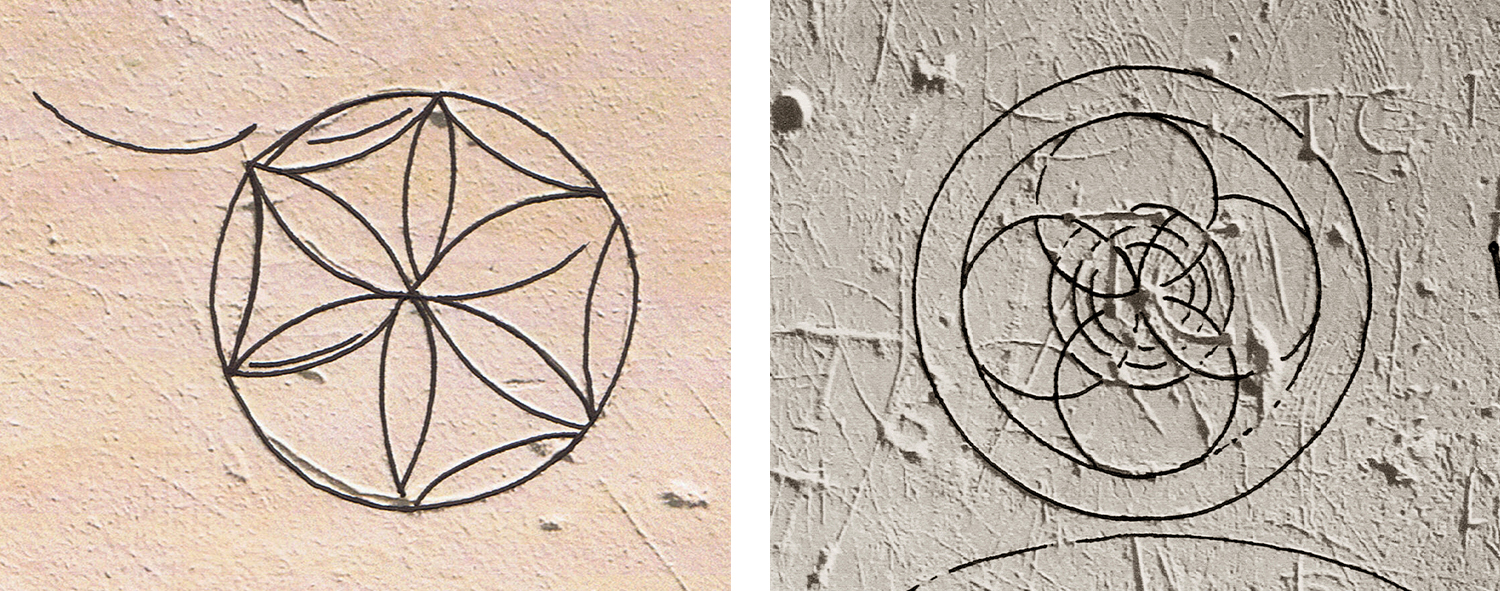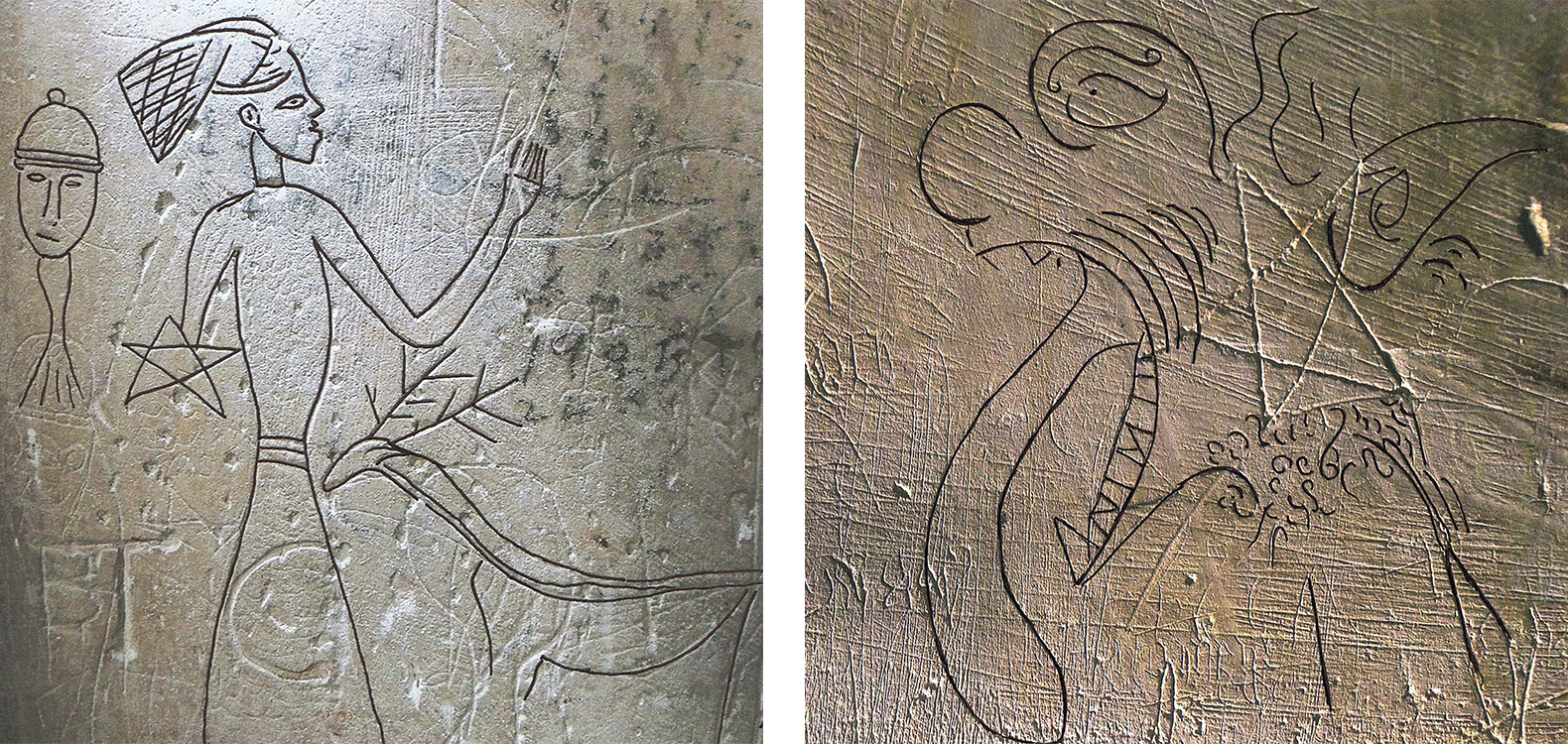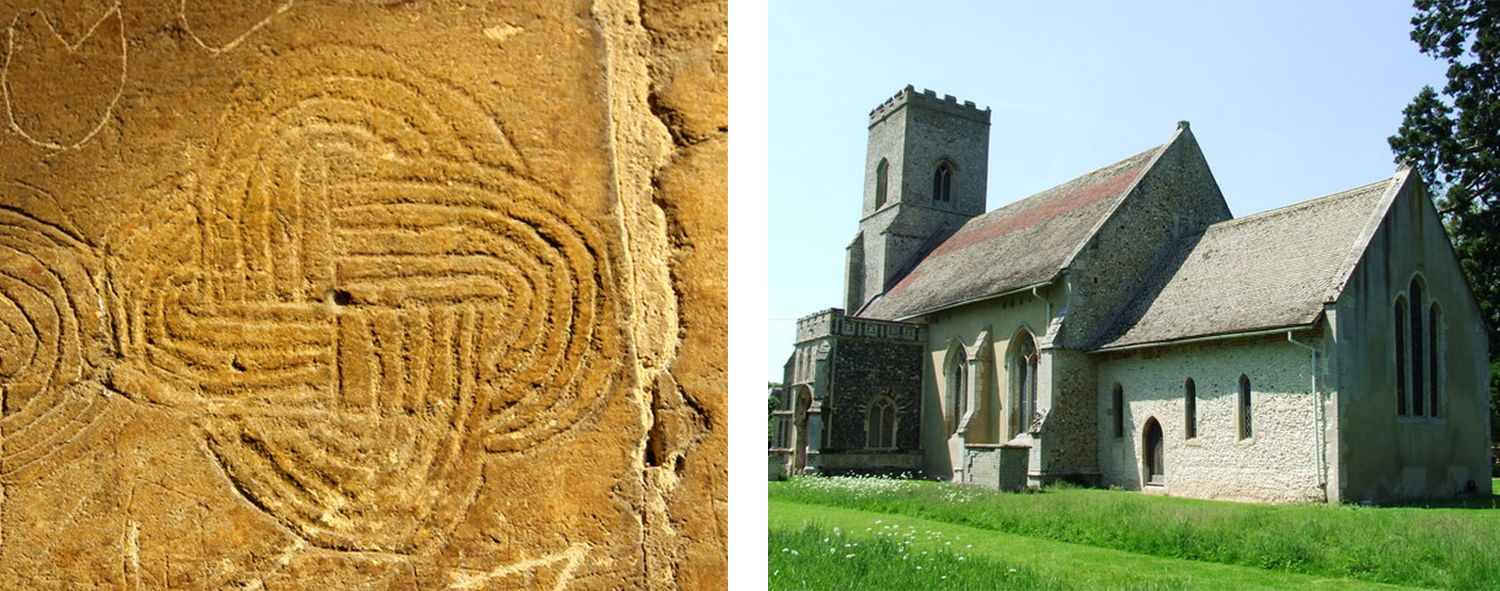Church of St Mary’s Troston Graffiti Inscriptions
The Church of St Mary’s at Troston was largely finished by 1300 A.D. with its porch added later in the 15th C, and was for the vast majority of the local population, as with much of the country, a symbol of local pride forming the hub of parish life.
Inside the church there are an unusually high number of graffiti inscriptions, a combination of decorative patterns, figurative drawings and crosses with the tower arch depicting inscriptions of birds, fishes and animals, including two depictions of a deer [1]. One possible interpretation for the frequency of birds found in medieval graffiti is that they are associated with the Holy Spirit, representative of the doves released by Noah [2] with avian symbolism being a prevalent icon of Christianity more generally, such as an eagle, peacock, or pelican.
The date ranges of the graffiti inside varies widely, from the 1350’s for the Troston Demon to 17–18th C for many of the drawings of figures and head profiles. More curious are the ritual protection symbols, the compass-drawn designs, and ‘apotropaic’ markings.

Compass-drawn designs such as the ‘daisy wheels’ also known as the hexafoil, were created as ‘apotropaic’ ritual protection marks and were designed to ward off the ‘evil eye’ [3]. They may have also emulated older solar symbols and thus repel darkness. The power within the symbol is thought to echo that of Solomon’s Knot [4]. King Solomon’s ring bore the symbol of a knot, a seemingly endless line believed to be engraved by God, which served to subdue demons by ensnaring evil forces within the symbol. Whilst the church preached its power during baptism services in being able to drive out demons in the physical world and the subtle influences of witchcraft and the Devil “the practice of creating such markings appears to have continued unabated.” [5] It was believed that the power of such symbols protection from malevolent forces and remained in use within peoples homes right into the early 19th C [6/7].

An unusual drawing of one figure can be seen standing beside a five-pointed star and a deer. Although today we may often associate the pentagram with a symbol for dark magic, during the Middle Ages it was an overtly Christian symbol with the five points representing the five wounds of Christ, and was closely associated with protection from demons. The star was seen as a ‘pure’ shape, giving it an apotropaic nature especially when it came to protection against demons [8]. The symbol of the pentagram, or pentacle, became further embodied in the 14th C poem of Sir Gawain and Green Knight whose shield carried this symbol, mirroring the Star of Bethlehem and the five virtues of knighthood. The choice of a deer may also be deliberate as the Way of Solitude and Purity was symbolised by the Stag, which was also regarded as a type of religious aspiration. In Christian symbolism, the stag was associated with the values of love, honour, kindness, mercy, grace, and forgiveness.
On the east face of the chancel arch a ‘demon trap’ has been drawn. The Troston Demon was the equivalent of a medieval cartoon character and is likely dated to the 1350s [9]. Its face can be seen contorted in agony, screaming with its eyes wide open with its oversized tongue lolling forwards. Inside this figure a pentacle, cut deep into the stonework as though this has been redrawn over time, time and time again in an attempt to trap it and pin it “to the wall for evermore”. [10]

References
1. Champion, M. (2015) The Graffiti Inscriptions of St Mary’s Church, Troston.
Proceedings of the Suffolk Institute of Archaeology, 43, part 2.
2. Coskun, A. (2020) Life and Death, Demons and Devotion: The Medieval Graffiti of Surrey’s Parish Churches.
Champion, M. (2015) Medieval Graffiti: The Lost Voices of England’s Churches.
3. Champion, M. (2015) Medieval graffiti – in pictures. The Guardian.
https://www.theguardian.com/artanddesign/gallery/2014/mar/29/medieval-graffiti-pictures-lydgate
4. Champion, M. (2015) The Graffiti Inscriptions of St Mary’s Church, Troston.
Proceedings of the Suffolk Institute of Archaeology, 43, part 2.
5. Champion, M. (2016) Graffiti Survey: Interpretation Record, Bodiam Castle, East Sussex.
6. Fairey, C. (2018) Protective Devices, Apotropaic Symbols and Witch Marks on Historic Buildings;
with examples from Cheshire, Shropshire and Staffordshire.
https://sites.google.com/site/charlesfaireyhistorian/publications/protective-devices-apotropaic-symbols-and-witch-marks
7. Hall, R. Warding off evil with witch marks. The National Trust.
https://www.nationaltrust.org.uk/features/witch-marks-these-marks
8. Champion, M. (2015) Medieval Graffiti: The Lost Voices of England’s Churches.
9. Carson, J. (2021) Can you spot the secret Medieval graffiti demon?
Scratched into the wall of a Suffolk church, a satanic evil awaits.
https://www.historyhit.com/troston-demon-graffiti/
10. Champion, M. (2013) Medieval Graffiti: The Lost Voices of England’s Churches.
http://medieval-graffiti.blogspot.com/2013/
